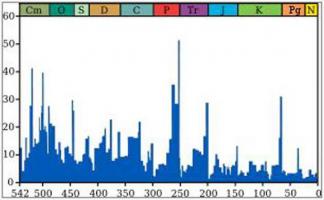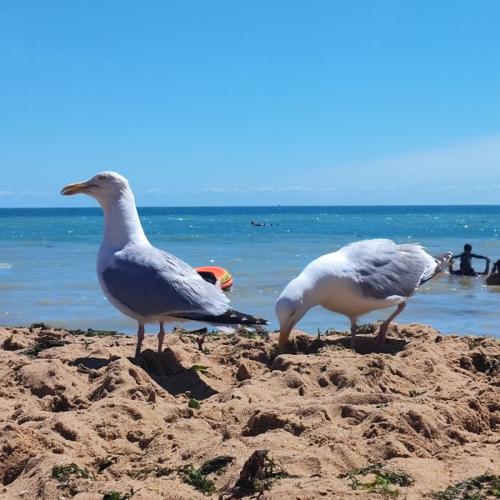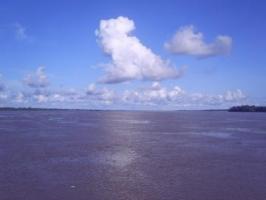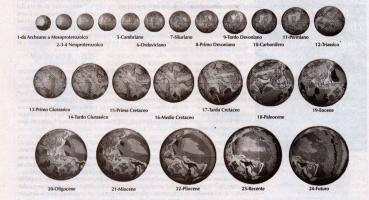Cenozoic
65 to 26 million years ago
The Cenozoic is divided into 5 periods:
- PALEOCENE
- EOCENE
- OLIGOCENE
- MIOCENE
- PLIOCENE
The MIOCENE and the PLIOCENE are however part of the Late Cenozoic.
MIOCENE begins about 26 million years ago and lasts 19 million years, PLIOCENE starts 7 million years ago and lasts 5 million years. Of course, since the Cenozoic Era is closer to us in time we can better distinguish its events, recorded, as usual, in the Earth's layers. It is therefore possible to distinguish five periods all of relatively short length. The denomination of the Tertiary Era, or simply Tertiary, also applies to this part of the history of the Earth. At the beginning of the era, the continental blocks resulting from the fracture of the supercontinents are seven:
- North America
- Eurasia
- Africa (with the "appendage" of Arabia)
- India
- South America
- Antarctica
- Australia (the latter three lands are still close enough to be sometimes joined by means of land "bridges" now emerged now submerged)

India straddles the equator; Antarctica continues to include the South Pole. Throughout the first part of the era (which corresponds to the periods called Paleocene and Eocene) there was perhaps a certain slowdown in orogenetic activity (which had been very notable throughout the late Mesozoic) precisely because there are no major "clashes" between the continental blocs. On the other hand, in many areas there is a rise in the ground level with the consequent drying up of inland seas and also of various basins such as lakes or swamps. The "birth" of the mountains will become intense towards the middle of the era, when for example Italy, Yugoslavia and Greece will "collide", coming from the South, Europe, giving rise to the chain of the Alps definitively, or at the end of it when India 's "impact" against South Asia will raise the highest (and "youngest") mountains on the planet: the Himalayan massif.

The climate is moderately cold in the areas close to the Poles, but elsewhere it is quite mild. The Cenozoic saw the progressive replacement of reptiles by mammals and birds and also the conquest, by the animals of these two classes, of new environments, of new "living spaces". The environment itself is being transformed by the progressive imposing affirmation of the Angiosperm plants (with apparent flowers): large trees, shrubs, herbs. In particular, the herbaceous monocotyledonous angiosperms spread over vast territories. As always, the "novelties" in the plant world precede those in the animal world: plants with flowers have their hoom before the decisive affirmation of mammals and birds and the development of extensive grasslands precedes the great flowering of the most efficient herbivores (mammals with two equal and symmetrical clogs Artiodactyls, "with even toes") and of excellent granivores. like many Passerine birds.

The "new" plants develop interesting methods for obtaining pollination, ie the transport of male gametes over female ones, based on the possibilities offered by animals and other elements of the environment as "transporters".
The mammalian "model"
We refer to a modern mammal, but the description also applies in practice to all fossil species of the Cenozoic. Vertebrates of this class are "warm blooded" (true homeotherms and their bodies are covered with hair. Sometimes, in addition to hair, there are also scales. In the skin there are many glands that produce and emit (secrete) various fluids (sweat, odorous liquids, sebum, milk).
The jaw is made up of a single bone (dental) and is articulated with the scaly bone of the upper part of the skull.

The square bone and other bony elements present in the skulls of amphibians and reptiles have changed profoundly in mammals, giving rise to the ossicular complex of the inner ear. The upper part of the skull (containing the brain: neurocranium) is fixed directly to the skeleton (bony) of the palate. In the long "antechamber", made while the dinosaurs were dominant, the mammals were essentially insectivores, hunters of tiny prey (worms, caterpillars and small vertebrates), perhaps egg eaters and granivores. Few forms (the most ancient primates) also fed on leaves. In the Paleocene, the first period of the Cenozoic, herbivorous forms of quite large dimensions developed from the group of the Condylarthroses, already documented in the late Cretaceous: they are the Pantodonts.
Interesting examples are provided by the pantolambda, about the size of a ram, and by the Barylamhda, as long as a horse but much stockier. This last animal, with a large tail, perhaps stood up on its sturdy hind limbs to reach the high branches of shrubs and trees: its fingers were fitted with curious hoof nails.

Some primates (Plesiadapis) and forms capable of launching from above gliding thrived on the trees (the current galeopithecus). There were many shrews, competing with more primitive forms (Multitubercolates) already on the way to extinction.
Carnivorous mammals developed with some delay. The real enemies of the paleocene herbivores of medium and large size were, near the banks of rivers and lakes, crocodiles and, on the mainland, especially in open areas, some large predatory birds.

























